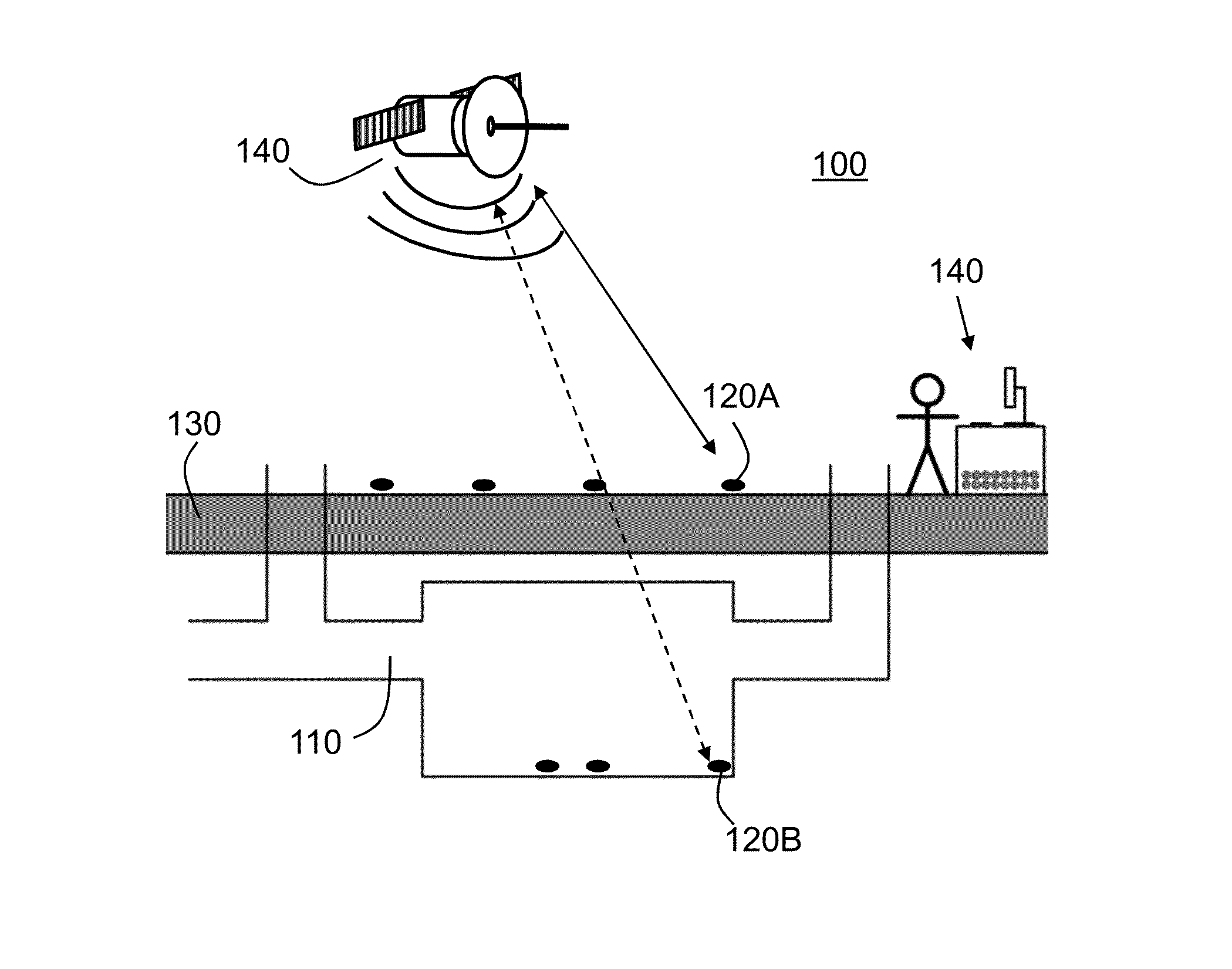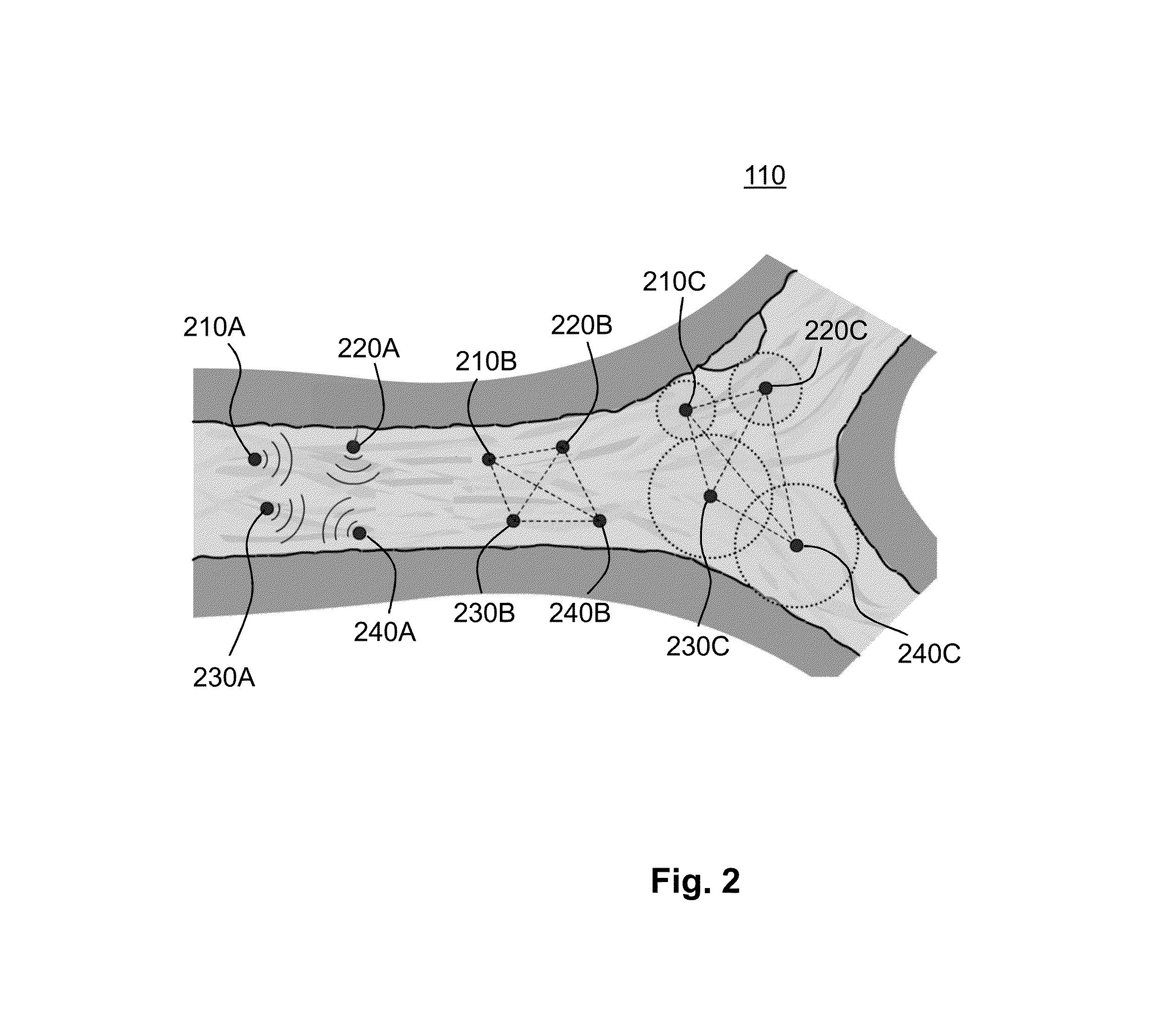Motes for environment mapping
a technology of environment mapping and motes, applied in the field of motes, can solve the problems of difficult access, hardware limitation, and inability to use state of art remote controlled exploration technologies, and achieve the effects of reducing or minimizing the overall required hardware components, simplifying the overall determination of spatial configuration, and reducing or minimizing the dimensions of the first motes
- Summary
- Abstract
- Description
- Claims
- Application Information
AI Technical Summary
Benefits of technology
Problems solved by technology
Method used
Image
Examples
Embodiment Construction
[0032]FIG. 1 shows an environment 100 in which a mapping is required. As indicated before, in known systems, the mapping of an environment may be done using a plurality of known sensor 120, also indicated as known motes 120A. The known motes 120A are distributed in the environment and communicate, for example, with a satellite 140 (indicated with a double arrow) to determine their position. This communication may also be used to exchange additional information which may be collected by the known motes 120A, such as local temperature, pressure, vibrations, etc. This information may be transferred to the base station 140—for example, again using the satellite 140 to collect all information and to interpret the received data to extract the required mapping. Alternatively, the network of known motes 120A may exchange the individual information of each of the known motes 120A amongst the other known motes 120A, such that each of the other known motes 120A substantially contains all or a ...
PUM
 Login to View More
Login to View More Abstract
Description
Claims
Application Information
 Login to View More
Login to View More - R&D
- Intellectual Property
- Life Sciences
- Materials
- Tech Scout
- Unparalleled Data Quality
- Higher Quality Content
- 60% Fewer Hallucinations
Browse by: Latest US Patents, China's latest patents, Technical Efficacy Thesaurus, Application Domain, Technology Topic, Popular Technical Reports.
© 2025 PatSnap. All rights reserved.Legal|Privacy policy|Modern Slavery Act Transparency Statement|Sitemap|About US| Contact US: help@patsnap.com



